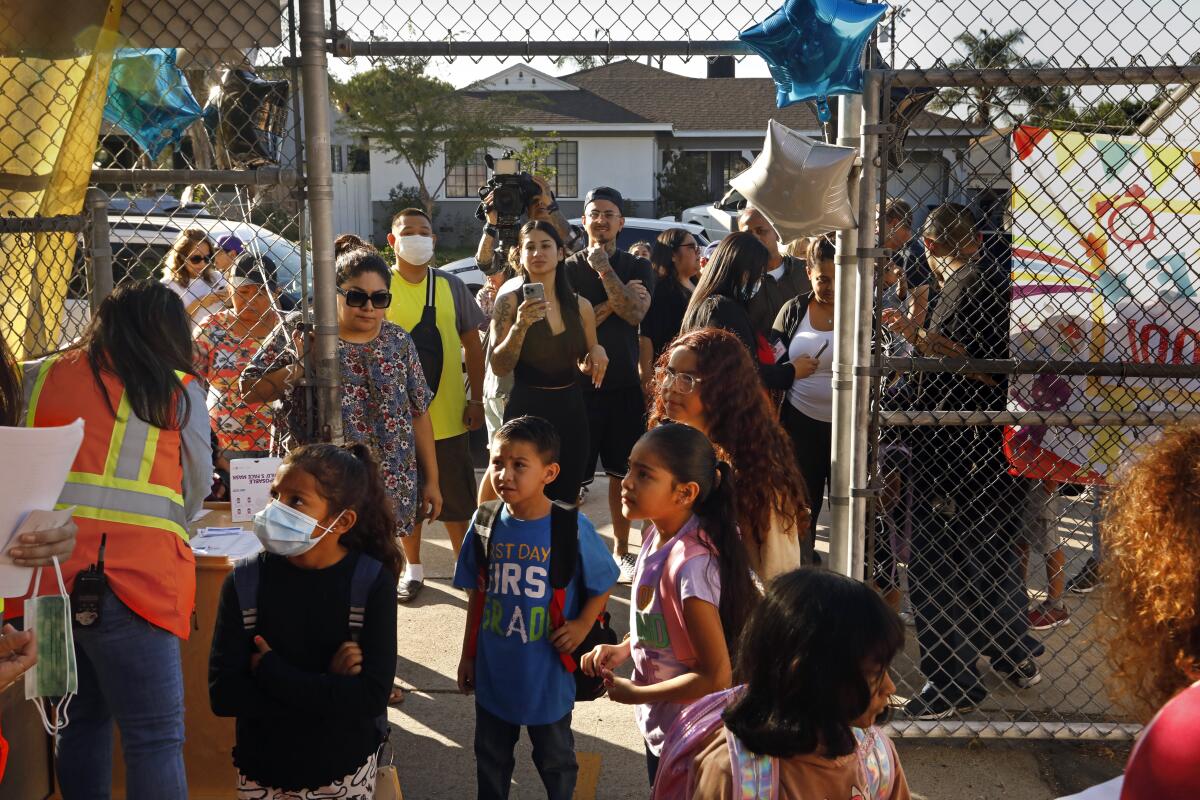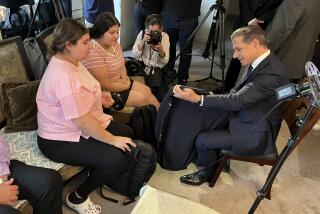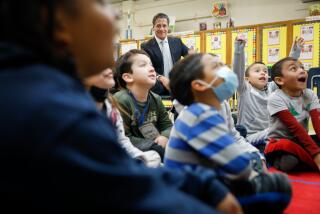Commentary: Back to school in the COVID era — things have changed, but not the worry

- Share via
Say the words “August in L.A.” and wait for groans from Angelenos.
It’s hot, but not as hot as it’ll be next week. The brush is dry enough to burn at the smallest spark (even from a gender-reveal party). Children go back to school with at least six weeks of summer left, a fact cited in protest by my three children when classes started in Alhambra Unified on Aug. 9.
If August is cruel to Los Angeles, it’s been especially cruel to parents during the pandemic.
Since 2020, August has been the time of year we reckon with how far from “normal” the school year will be. This year, the schools are open and vaccines are abundant, but the damage being done now seems unnervingly self-inflicted. Whereas the start of the 2020 and 2021 school years were driven by the course of the pandemic, this year schools and just about every other important institution have largely decided to allow the rapidly mutating virus run its course — with the blessing of the non-Trumpy, pro-science Biden administration.
For children now crowding back into mask- and vaccine-optional classrooms, this could have serious consequences.
To get a sense of how our attitudes have changed, think back to where we were two years ago. In 2020, the onset of August brought panic over remote schooling and upended work lives for parents. “We’re really doing this,” my wife and I would say to each other as we set up our children — including a 4-year-old transitional kindergartener — to learn via Zoom for however long as was necessary. For safety’s sake, we were committed to it, even if it made us miserable (and it did).
The following August, in 2021, was the next time my children saw the inside of a classroom. I had imagined a more triumphant return to school, with cinematic moments of reacquainted kids embracing and the community’s bonds restored. It wasn’t that exactly. In Los Angeles County, the Delta surge was peaking, vaccines for children were still months away, and outbreak-driven classroom shutdowns seemed constant.
Protected only with masks, classroom air filters and the good sense of children to stay away from one another (ha), my kids exchanged the relative safety of their home for the Petri dish known as school. They might have even heard me say, again, “We’re really doing this?”
Comes now the third August of the COVID era. My children are back in school, and it’s wonderful in the sense that “The Stepford Wives” is wonderful — that is, the dutiful cheerfulness of parents and teachers veils a darker reality. Masks are off and restrictions are relaxed, but the hard facts of the continuing pandemic remain. New strains of the coronavirus circulate and grow more transmissible and vaccine-evading, nearly 50 people in California per day are still dying of COVID-19, and society has grown more weary of protection measures than infection.
The week my children returned to school, the Centers for Disease Control and Prevention made a startling announcement: Its new COVID guidelines shifted much of the burden of protecting against illness away from institutions (like, say, schools) and onto individuals. Isolation guidelines are relaxed. Regular testing of non-symptomatic people, previously done every week at my kids’ school, is no longer recommended.
Yet it feels as though we’re giving in at the worst possible moment. Not only is school back in session, we’re also beginning to grapple with the prevalence and severity of so-called long COVID, a potentially disabling condition that leaves a reported one in eight COVID sufferers (that’s considered a low estimate) with symptoms such as brain fog and difficulty breathing for months or even longer.
Many parents still worry about their childcare lifelines being severed, and for good reason. Omicron and its subvariants burned through the population this summer, so plenty of us dealt with camps and daycares suddenly shuttered and close-contact notifications for our children lighting up our phones.
This was the summer for children who hadn’t caught COVID to have their date with this virus. I know of one 3-year-old — yes, a toddler — who became sick and developed long COVID this summer.
As with other societal failures that start with adults and inevitably victimize children (think gun violence), this pandemic will have long-term consequences for young people, even if adults have “learned to live with the virus.” It’s sad to be reminded of this at the start of another school year.
More to Read
A cure for the common opinion
Get thought-provoking perspectives with our weekly newsletter.
You may occasionally receive promotional content from the Los Angeles Times.











